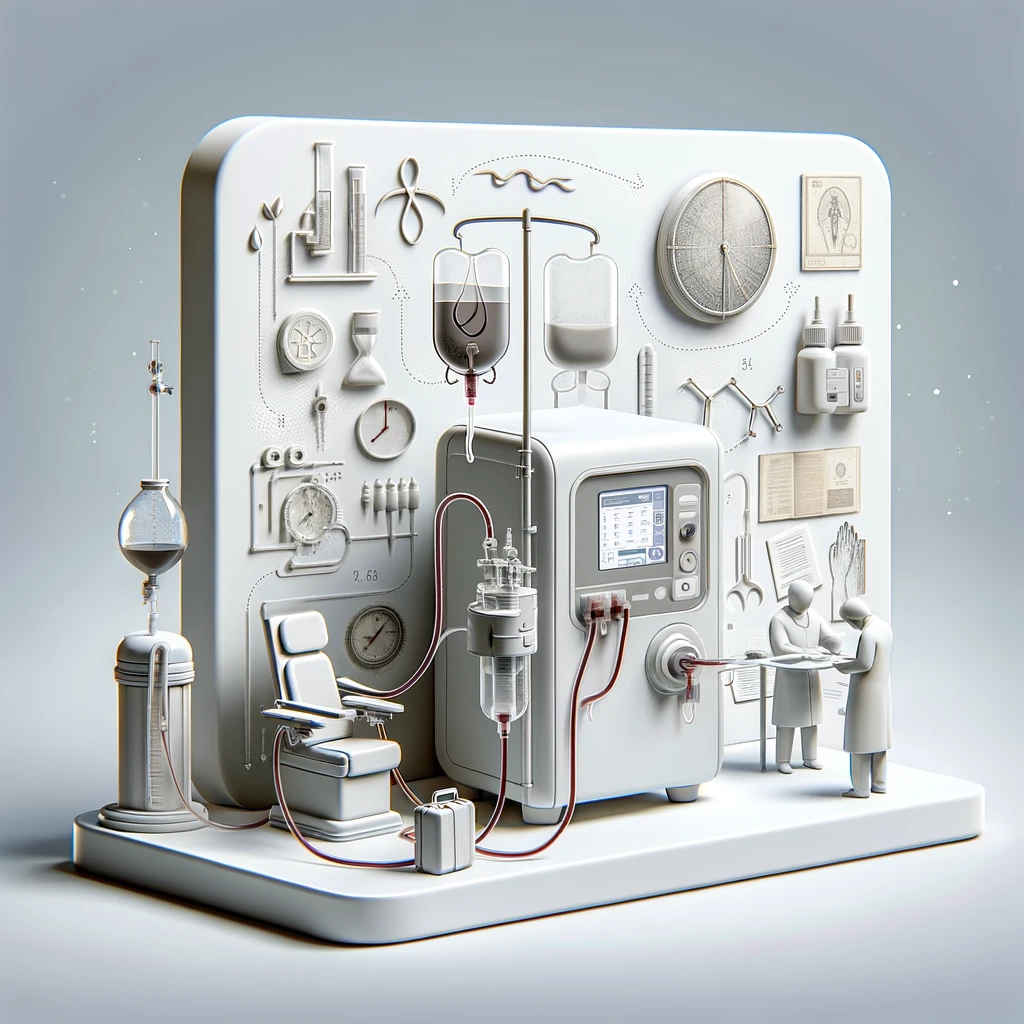
Hemodialysis, a life-saving treatment for patients with severe kidney failure, has a fascinating history marked by innovation, perseverance, and significant medical advancements. The early days of hemodialysis were characterized by groundbreaking experiments, dedicated researchers, and the gradual development of technology that has become a cornerstone in the management of chronic kidney disease (CKD).
Origins and Early Experiments
The concept of dialysis dates back to the 19th century when Scottish chemist Thomas Graham, often referred to as the “father -of dialysis,” first described the process of osmosis and diffusion through a semi-permeable membrane in 1854. Graham’s work laid the foundation for future dialysis research, but it would take several decades before these principles could be applied to treat kidney disease.
In the early 20th century, researchers began exploring ways to use dialysis for removing toxins from the blood. The first practical application of dialysis in humans was developed by German physician Georg Haas. In 1924, Haas performed the first human dialysis treatment using a primitive dialysis machine. He used collodion tubes as a dialysis membrane and hirudin, an anticoagulant derived from leeches, to prevent blood clotting. Despite the rudimentary nature of his apparatus and the limitations of the technology, Haas’ work demonstrated the feasibility of hemodialysis.
Breakthroughs and Pioneers
The true breakthrough in hemodialysis came in the 1940s with the work of Dutch physician Willem Kolff, who is often credited as the father of modern hemodialysis. During World War II, Kolff developed the first practical hemodialysis machine, known as the “rotating drum kidney” or “Kolff-Brigham artificial kidney.” Faced with limited resources and materials due to the war, Kolff ingeniously used cellophane sausage casing as the dialysis membrane and parts from various machinery to construct his device.
In 1943, Kolff successfully treated a comatose patient with acute kidney failure, restoring the patient to consciousness and demonstrating the life-saving potential of hemodialysis. This marked a significant milestone in medical history, as it was the first time that hemodialysis had been used to successfully treat a patient with kidney failure. Kolff’s machine, though cumbersome and labor-intensive, paved the way for future advancements in dialysis technology.
Evolution of Hemodialysis Technology
Following Kolff’s success, researchers and clinicians around the world began to refine and improve hemodialysis technology. One of the significant advancements came in the 1950s with the development of the Scribner shunt by Dr. Belding Scribner and his team at the University of Washington. The Scribner shunt, a Teflon-silicone tube permanently implanted in a patient’s blood vessels, allowed for repeated access to the bloodstream without the need for repeated punctures. This innovation made long-term hemodialysis possible and significantly improved patient outcomes.
In the 1960s and 1970s, further advancements in hemodialysis technology and techniques continued to improve the safety and efficacy of the treatment. The development of hollow fiber dialyzers, which replaced the older flat plate dialyzers, increased the efficiency of the dialysis process. Additionally, improvements in anticoagulation, ultrafiltration, and dialysis fluid composition enhanced the overall effectiveness and safety of hemodialysis.
Impact on Patient Care and Outcomes
The early days of hemodialysis were marked by trial and error, perseverance, and significant challenges. However, the dedication of pioneers like Kolff, Haas, and Scribner laid the groundwork for a treatment that has saved countless lives. Hemodialysis has evolved from a rudimentary, experimental procedure to a sophisticated and widely available treatment for patients with end-stage renal disease (ESRD).
Today, millions of patients worldwide rely on hemodialysis to manage their kidney failure, thanks to the pioneering efforts of early researchers and the continuous advancements in dialysis technology. Hemodialysis not only prolongs life but also improves the quality of life for patients, allowing them to maintain their daily activities and remain active members of society.
Conclusion
The early days of hemodialysis were characterized by innovation, dedication, and remarkable achievements. From the initial experiments by Thomas Graham and Georg Haas to the groundbreaking work of Willem Kolff and Belding Scribner, the development of hemodialysis represents a triumph of medical ingenuity and perseverance.
Quiz
Please note that our articles are not intended to guide personal health decisions.
This content has been curated by Renes Care. Unauthorized use or reproduction is prohibited.
© Renes Care. All rights reserved.
